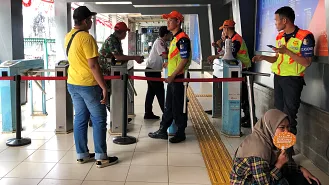A widespread power outage in Indonesia has left millions of residents in the dark, disrupting daily life and causing significant disruptions across various sectors. The blackout, which began in the early hours of the morning, affected several regions, including Jakarta, West Java, and parts of Sumatra. The sudden loss of electricity has raised concerns about the reliability of the country’s power grid and its ability to handle peak demands.
The state-owned electricity company, PLN (Perusahaan Listrik Negara), reported that the outage was caused by technical failures in the grid system, leading to a cascading effect that knocked out power in multiple areas. PLN officials stated that they were working diligently to restore electricity and expected to have the situation under control within hours. However, as the hours turned into a full day without power for many, frustration among residents began to grow.
Public transport systems were severely impacted, with many commuters stranded at train stations and bus stops. The absence of electricity also affected businesses, schools, and hospitals, leading to a significant disruption in daily operations. In hospitals, emergency power generators were activated, but staff faced challenges in providing adequate care due to the limited power supply.
Social media platforms were flooded with reports from individuals sharing their experiences during the blackout. Many expressed their frustrations over the lack of communication from PLN regarding the cause and expected duration of the outage. Some residents took to Twitter to voice their concerns, using hashtags to draw attention to the situation and demanding answers from the government.
In response to the public outcry, PLN held a press conference to explain the situation further. Company representatives acknowledged the inconvenience caused to the public and assured that they were investigating the root causes of the outage. They also emphasized their commitment to improving infrastructure and preventing future occurrences.
As the power restoration efforts continued, local communities organized makeshift gatherings, lighting candles and using battery-powered devices to stay connected. The solidarity among residents was palpable, as neighbors came together to share resources and support each other during the challenging time.
By late afternoon, PLN announced that power had been restored to most affected areas, although some regions remained without electricity. Officials urged residents to conserve energy as they worked to stabilize the grid and prevent further outages.
This massive blackout highlights the vulnerabilities in Indonesia’s electricity infrastructure, raising questions about the country’s capacity to meet the growing energy demands of its population. As Indonesia continues to develop, addressing these issues will be crucial to ensuring a reliable power supply and maintaining public confidence in the energy sector.
In conclusion, the recent power outage in Indonesia serves as a stark reminder of the challenges faced by the country’s electricity grid. While power has been largely restored, the incident has prompted discussions about the need for improvements in infrastructure and crisis management to better serve the millions who rely on a stable electricity supply.




